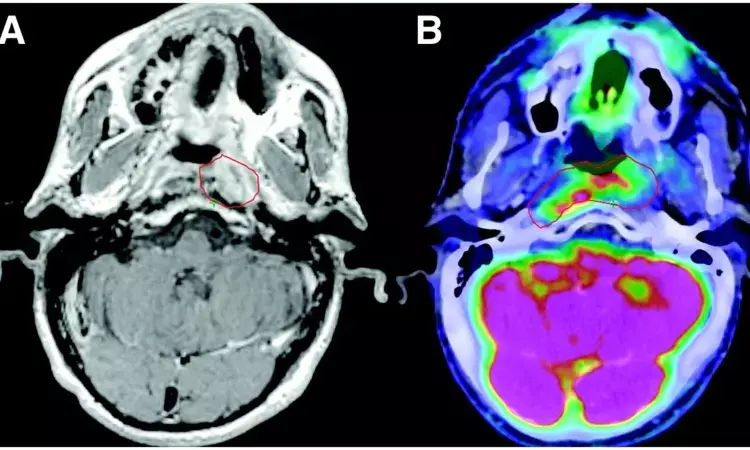- Home
- Medical news & Guidelines
- Anesthesiology
- Cardiology and CTVS
- Critical Care
- Dentistry
- Dermatology
- Diabetes and Endocrinology
- ENT
- Gastroenterology
- Medicine
- Nephrology
- Neurology
- Obstretics-Gynaecology
- Oncology
- Ophthalmology
- Orthopaedics
- Pediatrics-Neonatology
- Psychiatry
- Pulmonology
- Radiology
- Surgery
- Urology
- Laboratory Medicine
- Diet
- Nursing
- Paramedical
- Physiotherapy
- Health news
- Fact Check
- Bone Health Fact Check
- Brain Health Fact Check
- Cancer Related Fact Check
- Child Care Fact Check
- Dental and oral health fact check
- Diabetes and metabolic health fact check
- Diet and Nutrition Fact Check
- Eye and ENT Care Fact Check
- Fitness fact check
- Gut health fact check
- Heart health fact check
- Kidney health fact check
- Medical education fact check
- Men's health fact check
- Respiratory fact check
- Skin and hair care fact check
- Vaccine and Immunization fact check
- Women's health fact check
- AYUSH
- State News
- Andaman and Nicobar Islands
- Andhra Pradesh
- Arunachal Pradesh
- Assam
- Bihar
- Chandigarh
- Chattisgarh
- Dadra and Nagar Haveli
- Daman and Diu
- Delhi
- Goa
- Gujarat
- Haryana
- Himachal Pradesh
- Jammu & Kashmir
- Jharkhand
- Karnataka
- Kerala
- Ladakh
- Lakshadweep
- Madhya Pradesh
- Maharashtra
- Manipur
- Meghalaya
- Mizoram
- Nagaland
- Odisha
- Puducherry
- Punjab
- Rajasthan
- Sikkim
- Tamil Nadu
- Telangana
- Tripura
- Uttar Pradesh
- Uttrakhand
- West Bengal
- Medical Education
- Industry
Mid-treatment imaging useful for de-escalating therapy for oropharynx cancer

PHOENIX - A new phase II trial finds that PET scans obtained before and midway through treatment for p16-positive oropharynx cancer (OPC) can help determine whether a patient can receive a lower dose of radiation therapy in the second half of their treatment course without compromising cancer control. Patients in the trial who received de-escalated therapy experienced fewer short-term side effects than those who received standard therapy. Findings from the study will be presented today at the 2022 Multidisciplinary Head and Neck Cancers Symposium.
The study focused on imaging using fluorodeoxyglucose (FDG) to detect responses to chemoradiation for p16+ oropharynx cancer. While FDG is the most commonly used radiotracer in clinical PET imaging, this trial is the first to report its use as a mid-treatment imaging marker to guide de-escalation for OPC.
Patients in this multi-institution trial had FDG-PET scans to determine their metabolic tumor volume before and midway through treatment. The current analysis reports findings for the first 59 patients accrued to the trial. Those who had tumors with lower metabolic activity before treatment and more than 50% reduction in metabolic tumor volume after two weeks of treatment were de-escalated – specifically, treatment stopped at a total dose of 54 Gy in 27 fractions, rather than the standard total dose of 70 Gy in 35 fractions. All patients received concurrent weekly carboplatin/paclitaxel chemotherapy.
"Advanced imaging helps physicians personalize therapy based on patients' individual tumor characteristics and response to treatment. By incorporating FDG-PET scans before and midway through treatment, we were able to adjust the radiation dose for about half of our patients and reduce their short-term side effects while still focusing on tumor control," said lead author Steven Allen, MD, PhD, a radiation oncology resident at the University of Michigan.
Half of the patients met de-escalation criteria and received the lower radiation dose, resulting in approximately 25% less radiation exposure to the sensitive structures in the head and neck known to be associated with side effects during treatment. Patients in the de-escalated group had significantly less weight loss during treatment (6% vs. 11% from baseline, p<0.001), were less likely to need a feeding tube (1 vs. 7 patients, p=0.037) and had improved swallowing function on a video swallow study administered after treatment (p=0.036).
"We anticipated long-term improvements in side effects, but the short-term improvements were better than expected," said senior author and principal investigator Michelle L Mierzwa, MD, Associate Chair of Clinical Research and Co-Chair of Head and Neck Clinical Trials at the University of Michigan. "Experiencing fewer short-term side effects potentially allows patients to get back to their normal activities more quickly."
Hina Zahid Joined Medical Dialogue in 2017 with a passion to work as a Reporter. She coordinates with various national and international journals and association and covers all the stories related to Medical guidelines, Medical Journals, rare medical surgeries as well as all the updates in the medical field. Email: editorial@medicaldialogues.in. Contact no. 011-43720751
Dr Kamal Kant Kohli-MBBS, DTCD- a chest specialist with more than 30 years of practice and a flair for writing clinical articles, Dr Kamal Kant Kohli joined Medical Dialogues as a Chief Editor of Medical News. Besides writing articles, as an editor, he proofreads and verifies all the medical content published on Medical Dialogues including those coming from journals, studies,medical conferences,guidelines etc. Email: drkohli@medicaldialogues.in. Contact no. 011-43720751


